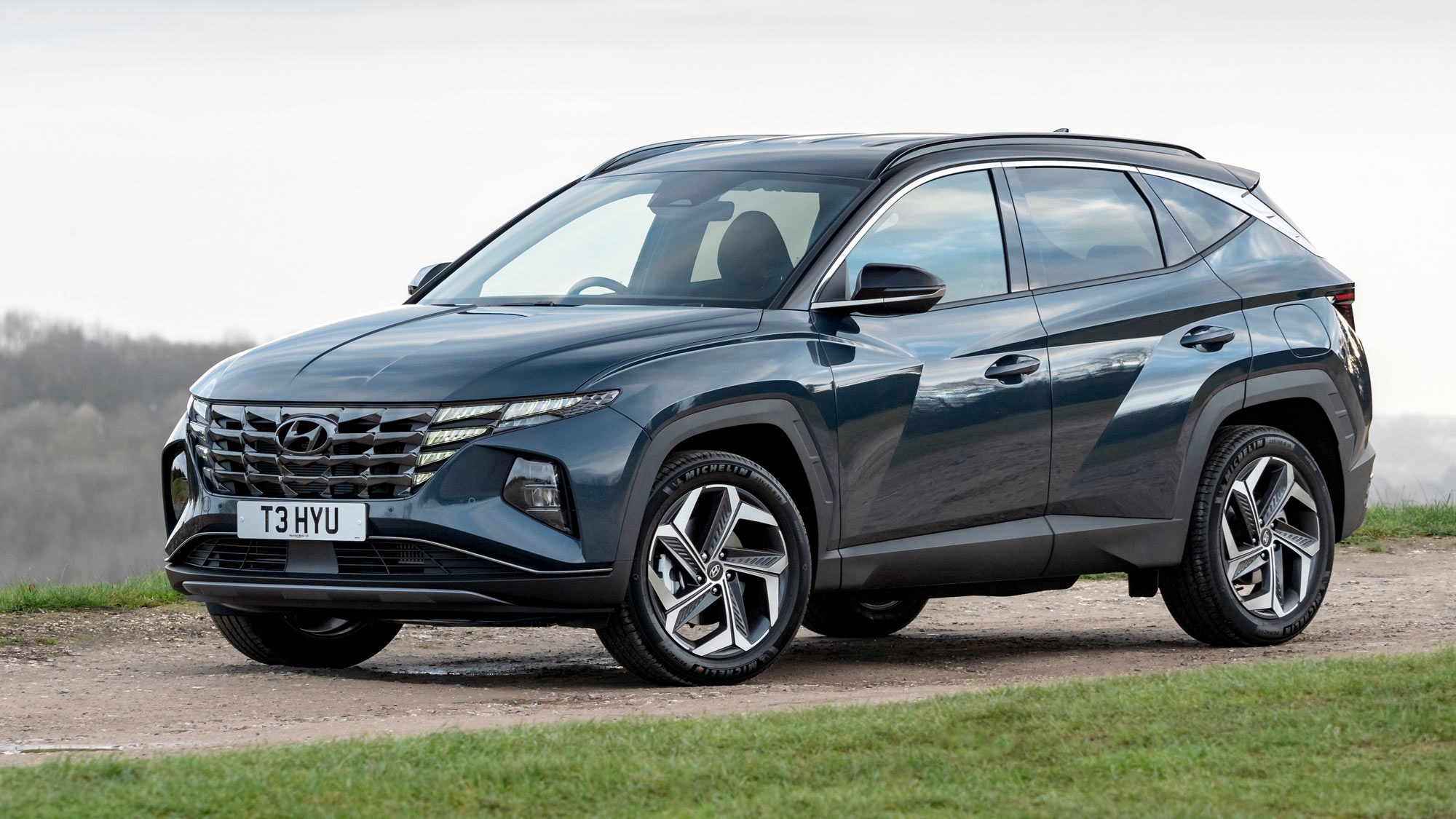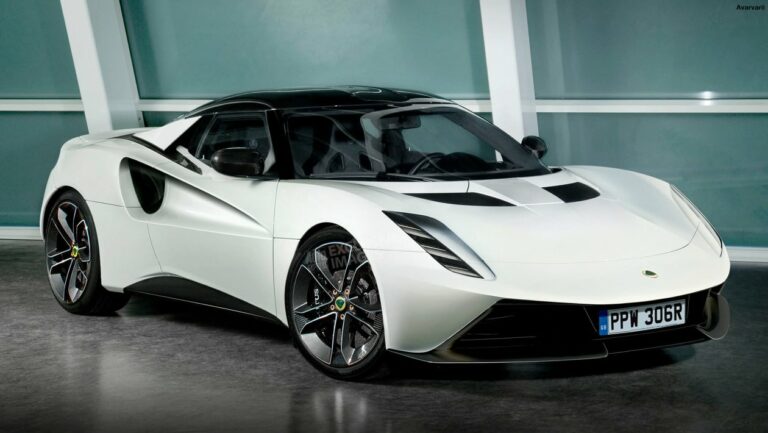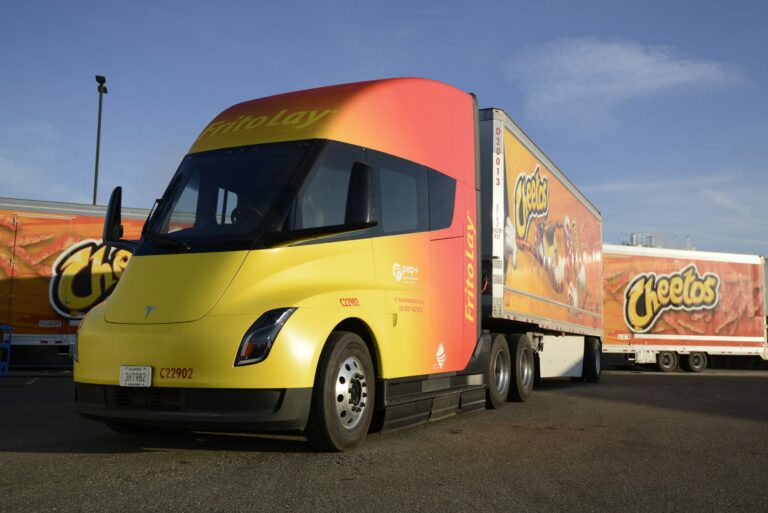Brand New Hybrid Cars: Your Comprehensive Guide to Eco-Friendly Driving
Brand New Hybrid Cars: Your Comprehensive Guide to Eco-Friendly Driving cars.truckstrend.com
The automotive landscape is undergoing a profound transformation, and at the heart of this shift lies the burgeoning popularity of hybrid cars. No longer a niche segment, brand new hybrid vehicles represent a smart, sustainable, and increasingly diverse choice for drivers seeking to balance environmental responsibility with practical daily needs. By seamlessly blending the efficiency of an electric motor with the familiarity of a gasoline engine, hybrids offer a compelling bridge between traditional internal combustion engines (ICE) and fully electric vehicles (EVs), making them a pivotal player in our journey towards a greener future. This comprehensive guide will delve into everything you need to know about brand new hybrid cars, from their core technologies and diverse types to the benefits they offer and crucial considerations before you buy.
The Hybrid Revolution: Why Choose a Hybrid Now?
Brand New Hybrid Cars: Your Comprehensive Guide to Eco-Friendly Driving
The decision to opt for a brand new hybrid car comes with a multitude of compelling advantages that address both economic and environmental concerns.
- Superior Fuel Efficiency: This is arguably the primary draw. By utilizing electric power during low-speed driving, idling, and start-stop conditions, hybrids significantly reduce gasoline consumption compared to their pure ICE counterparts. This translates directly into fewer trips to the gas station and substantial savings on fuel costs over time.
- Reduced Emissions: Lower fuel consumption directly correlates with reduced greenhouse gas emissions. Hybrid vehicles contribute to cleaner air and a smaller carbon footprint, aligning with global efforts to combat climate change.
- Extended Range and No Range Anxiety: Unlike pure EVs, which require charging infrastructure and can induce "range anxiety" on long trips, hybrids offer the best of both worlds. They provide electric assistance for efficiency, but their gasoline engine ensures you can always refill at any gas station, eliminating concerns about finding charging points on extended journeys.
- Quiet Operation: At low speeds, many hybrids operate solely on electric power, providing a remarkably quiet and smooth driving experience, particularly in urban environments.
- Strong Resale Value: The growing demand for fuel-efficient and environmentally conscious vehicles often translates into good resale values for hybrid models.
- Government Incentives: Depending on your region, purchasing a new hybrid (especially a Plug-in Hybrid Electric Vehicle or PHEV) may qualify you for various government incentives, such as tax credits, rebates, or preferential parking, further reducing the total cost of ownership.

How Hybrid Technology Works: A Closer Look Under the Hood
At its core, a hybrid car is an intelligent machine designed to optimize energy usage. It achieves this by combining an internal combustion engine (typically gasoline) with an electric motor and a battery pack. The vehicle’s computer system constantly monitors driving conditions and seamlessly switches between, or combines, these power sources to maximize efficiency.
Key technologies that enable this synergy include:
- Electric Motor/Generator: This component can either propel the vehicle using electricity from the battery or act as a generator to recharge the battery.
- Battery Pack: Stores the electrical energy. Modern hybrids primarily use Lithium-ion (Li-ion) batteries, though some older or mild hybrid models may still use Nickel-Metal Hydride (NiMH).
- Power Control Unit: The "brain" of the hybrid system, which manages the flow of power between the engine, motor, and battery.
- Regenerative Braking: A crucial feature where the electric motor reverses its function during deceleration or braking, converting kinetic energy (normally lost as heat) back into electricity to recharge the battery. This significantly boosts efficiency, particularly in stop-and-go traffic.
- Automatic Start/Stop System: The gasoline engine automatically shuts off when the vehicle comes to a stop (e.g., at a traffic light) and seamlessly restarts when you release the brake pedal, eliminating idling and saving fuel.
Hybrid systems are generally categorized into a few main configurations:
- Parallel Hybrid: Both the electric motor and the gasoline engine can directly power the wheels, either independently or together. This is the most common type, offering a good balance of performance and efficiency.
- Series Hybrid: The gasoline engine acts solely as a generator to produce electricity, which then powers the electric motor that drives the wheels. The wheels are never directly powered by the gasoline engine.
- Series-Parallel (Power-Split) Hybrid: A combination of both, offering the flexibility of a parallel system with the efficiency benefits of a series system. This is often found in Toyota’s popular hybrid synergy drive.
Decoding Hybrid Types: From Mild to Plug-In
The term "hybrid" encompasses a range of technologies, each offering different levels of electrification and efficiency. Understanding these distinctions is crucial for choosing the right vehicle for your needs.
- Mild Hybrid Electric Vehicles (MHEV): These are the simplest form of hybrids. They use a small electric motor/generator (often a 48-volt system) to assist the gasoline engine, providing a slight boost during acceleration and enabling more aggressive regenerative braking and efficient engine start-stop functionality. MHEVs cannot power the car on electricity alone, but they offer a modest improvement in fuel economy over non-hybrid counterparts.
- Full Hybrid Electric Vehicles (HEV): Also known as "self-charging hybrids," HEVs feature a larger electric motor and battery pack than MHEVs, allowing them to drive short distances at low speeds on electric power alone. The battery is recharged through regenerative braking and by the gasoline engine. They do not need to be plugged in. Examples include the Toyota Prius, Honda CR-V Hybrid, and Ford Maverick Hybrid.
- Plug-in Hybrid Electric Vehicles (PHEV): PHEVs represent a significant leap in hybrid technology. They boast a much larger battery pack that can be charged externally by plugging into an electric vehicle charger (Level 1, Level 2, or DC Fast Charging). This enables a substantial all-electric driving range (typically 20-50+ miles) before the gasoline engine kicks in. For many commuters, a PHEV can function as an EV for daily driving, with the gasoline engine providing the flexibility for longer trips without range anxiety. Examples include the Toyota RAV4 Prime, Hyundai Tucson Plug-in Hybrid, and Chrysler Pacifica Hybrid.
- Range-Extended Electric Vehicles (EREV): While less common in new models today, EREVs are essentially electric vehicles with a gasoline engine that acts solely as a generator to recharge the battery and extend the range once the battery is depleted. The electric motor always drives the wheels.
Key Considerations Before Buying Your New Hybrid
Before committing to a brand new hybrid, take stock of your personal circumstances and priorities.
- Driving Habits: Consider your typical commute and driving patterns. If you do a lot of stop-and-go city driving, a full hybrid (HEV) or plug-in hybrid (PHEV) will offer the most significant fuel savings. If you primarily drive long distances on highways, the benefits might be less pronounced, though still present. For PHEVs, assess your access to home or workplace charging.
- Budget: Hybrid vehicles often have a slightly higher upfront purchase price than comparable gasoline-only models due to the added technology. However, factor in the potential long-term savings from reduced fuel costs and possible government incentives. Calculate the total cost of ownership over several years.
- Electric Range Needs (for PHEVs): If you’re considering a PHEV, evaluate if its electric-only range covers your daily driving needs. The more you can drive on electric power, the more you’ll save on gasoline.
- Performance Expectations: While efficiency is key, modern hybrids offer varying levels of performance. Some are designed for maximum economy, while others (like performance-oriented PHEVs) can offer surprising acceleration due to the instant torque of electric motors.
- Warranty and Maintenance: Understand the warranty coverage, especially for the hybrid components (battery, electric motor, inverter). Hybrid systems are generally reliable, and battery degradation is less of a concern than commonly perceived, with many lasting the life of the vehicle. Maintenance costs are often comparable to ICE vehicles, though some specialized components may require specific expertise.
- Environmental Impact: If reducing your carbon footprint is a primary motivator, any hybrid is a step in the right direction. A PHEV, particularly when charged with renewable energy, offers the most significant environmental benefits among hybrid types.
Top Tips for Maximizing Your Hybrid’s Efficiency
Owning a hybrid is only half the battle; how you drive it significantly impacts its real-world fuel economy.
- Drive Smoothly: Avoid aggressive acceleration and braking. Hybrids thrive on gentle inputs. Smooth acceleration allows the electric motor to do more work, and gradual deceleration maximizes regenerative braking.
- Anticipate Traffic: Look ahead to anticipate stops and traffic flow. This allows you to coast and regenerate energy rather than suddenly braking.
- Utilize Regenerative Braking: Familiarize yourself with how your car’s regenerative braking works. Many models have a "B" mode (or similar) on the shifter that increases regeneration.
- Maintain Proper Tire Pressure: Under-inflated tires increase rolling resistance, reducing fuel economy. Check your tire pressure regularly.
- Use Eco Mode: Most hybrids come with an "Eco" driving mode that optimizes throttle response and climate control settings for maximum efficiency.
- Pre-Condition (PHEVs): If your PHEV is plugged in, use its climate control pre-conditioning feature to warm or cool the cabin before you start driving. This uses grid power instead of the battery or engine, preserving your electric range.
- Regular Maintenance: Keep up with scheduled maintenance. A well-maintained engine and hybrid system operate more efficiently.
The Road Ahead: Challenges and the Future of Hybrids
While hybrids offer numerous benefits, they are not without their considerations. The initial purchase price can be higher than comparable gasoline-only models, though this is often offset by long-term fuel savings. Additionally, some perceive the technology as more complex, potentially leading to higher repair costs, though modern hybrid systems are robust and reliable.
Looking to the future, hybrids will likely continue to play a crucial role as a transitional technology. As battery technology improves and charging infrastructure expands, full EVs will become more accessible and affordable. However, for the foreseeable future, hybrids will remain an excellent choice for drivers who want improved efficiency and lower emissions without the commitment or infrastructure demands of a pure EV. Manufacturers are continually refining hybrid systems, making them more efficient, powerful, and integrated, ensuring their relevance in a diverse automotive market.
Brand New Hybrid Cars: Estimated Starting Prices & Key Specs
This table provides estimated starting Manufacturer’s Suggested Retail Prices (MSRP) and key specifications for popular brand new hybrid models in the market. Prices can vary significantly based on trim levels, optional features, and regional differences. Always check with a local dealership for the most current and accurate pricing.
| Model | Type | Est. Starting MSRP | Est. Combined MPG (or MPGe) | Est. EV Range (PHEV) | Key Feature / Note |
|---|---|---|---|---|---|
| Toyota Prius | HEV | $29,000 | 57 MPG | N/A | Iconic efficiency, modern redesign. |
| Toyota RAV4 Hybrid | HEV | $32,500 | 39 MPG | N/A | Popular compact SUV, excellent AWD. |
| Toyota RAV4 Prime | PHEV | $44,000 | 94 MPGe / 38 MPG | 42 miles | Powerful, long EV range for an SUV. |
| Honda CR-V Hybrid | HEV | $34,000 | 37 MPG | N/A | Roomy compact SUV, comfortable ride. |
| Hyundai Elantra Hybrid | HEV | $27,000 | 50 MPG | N/A | Stylish compact sedan, strong value. |
| Hyundai Tucson Hybrid | HEV | $33,000 | 38 MPG | N/A | Bold design, spacious interior. |
| Hyundai Tucson PHEV | PHEV | $39,000 | 80 MPGe / 35 MPG | 33 miles | Practical SUV, good EV range for daily commute. |
| Ford Maverick Hybrid | HEV | $24,000 | 37 MPG | N/A | Compact pickup truck, very affordable. |
| Kia Niro Hybrid | HEV | $28,000 | 49 MPG | N/A | Versatile compact crossover, multiple powertrain options. |
| Lexus ES 300h | HEV | $45,000 | 44 MPG | N/A | Luxury mid-size sedan, refined experience. |
| Chrysler Pacifica Hybrid | PHEV | $54,000 | 82 MPGe / 30 MPG | 32 miles | Only PHEV minivan, family-friendly. |
Note: MSRPs are starting prices for base models and are subject to change. MPG figures are EPA estimates. MPGe (Miles Per Gallon equivalent) is used for PHEVs to represent their electric efficiency. EV Range is the estimated all-electric range for PHEVs.
Frequently Asked Questions (FAQ) About Brand New Hybrid Cars
Here are answers to some common questions about brand New Hybrid Cars:
Q1: Are brand new hybrid cars reliable?
A1: Yes, modern hybrid cars are highly reliable. Manufacturers like Toyota, Honda, and Hyundai have invested heavily in hybrid technology for decades, and the systems are designed for longevity. The added complexity is managed by sophisticated software, and hybrid components are generally covered by long warranties.
Q2: How long do hybrid car batteries last?
A2: Hybrid batteries are designed to last the lifespan of the vehicle, often 8 to 10 years or 100,000 to 150,000 miles, with many exceeding this. Most manufacturers offer extended warranties on hybrid battery components, typically 8 years/100,000 miles, and in some states, even longer (e.g., 10 years/150,000 miles).
Q3: Is maintenance more expensive for hybrid cars?
A3: Generally, routine maintenance for hybrids is comparable to gasoline-only cars. They still require oil changes, tire rotations, and brake service. In some cases, brake components may even last longer due to regenerative braking reducing wear. Specialized hybrid components rarely need service, but if they do, it might require a dealership or specialized technician.
Q4: Do hybrid cars need to be plugged in?
A4: It depends on the type. Full Hybrids (HEVs) do not need to be plugged in; their batteries recharge through regenerative braking and the gasoline engine. Plug-in Hybrid Electric Vehicles (PHEVs) do need to be plugged in to utilize their all-electric range, but they can still operate as regular hybrids once their electric range is depleted.
Q5: What’s the difference between a hybrid and an electric vehicle (EV)?
A5: A hybrid car combines a gasoline engine with an electric motor and a small battery. An Electric Vehicle (EV) is powered solely by an electric motor and a large battery pack, with no gasoline engine. EVs produce zero tailpipe emissions, while hybrids significantly reduce them.
Q6: Do hybrid cars really save money?
A6: Yes, in most cases. While the initial purchase price might be slightly higher, the significant savings on fuel costs, potentially lower maintenance on some components (like brakes), and possible government incentives often lead to a lower total cost of ownership over the vehicle’s lifespan.
Q7: Are there any downsides to owning a hybrid?
A7: Potential downsides can include a slightly higher initial purchase price compared to a non-hybrid equivalent, and for some performance enthusiasts, certain hybrids might feel less responsive than their gasoline counterparts (though this is rapidly changing with modern designs). Battery replacement, while rare, can be costly if it occurs outside of warranty.
Conclusion: Driving Towards a Sustainable Future
Brand new hybrid cars stand as a testament to automotive innovation, offering a compelling blend of efficiency, practicality, and environmental consciousness. From the self-charging convenience of full hybrids to the significant electric range of plug-in models, there’s a hybrid out there to suit almost every lifestyle and need. By embracing hybrid technology, drivers can not only reduce their fuel expenses and carbon footprint but also contribute to a broader movement towards a more sustainable and electrified future. As technology continues to evolve, brand new hybrid cars will remain a smart, responsible, and increasingly indispensable choice on the road ahead.




